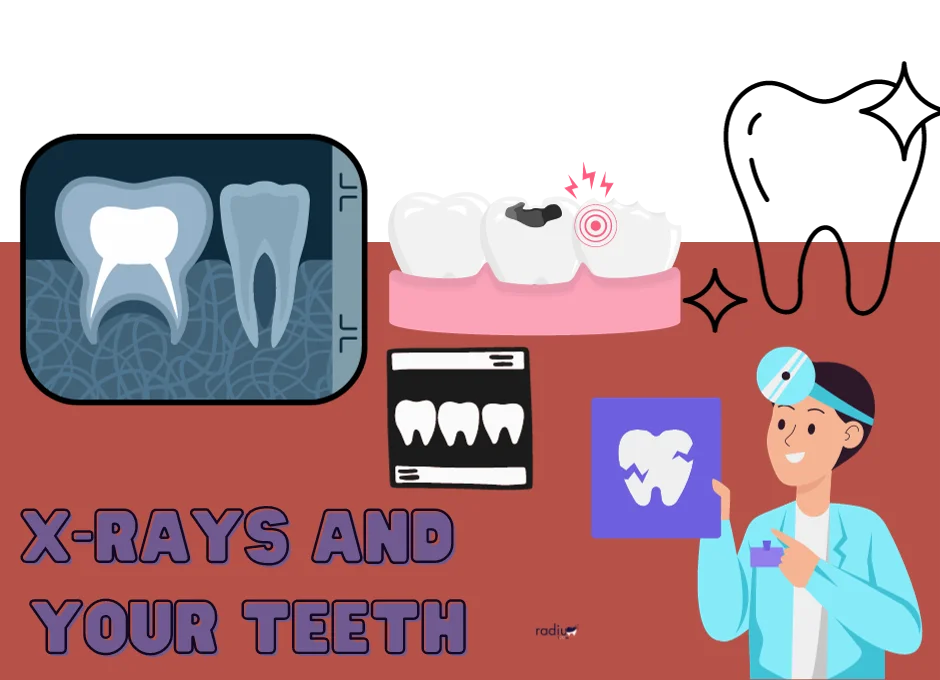Dental radiology stands as a pivotal element in contemporary dentistry, reshaping our approach to understanding and preserving our teeth. This article traces its significance from its historical inception to the forefront of digital technology. It unravels how dental radiology plays a crucial role in upholding optimal oral health.
In the realm of modern dentistry, dental radiology is a linchpin, transforming our comprehension and care of teeth. Its roots delve deep into history, evolving to encompass state-of-the-art digital techniques. This article sheds light on the pivotal position of dental radiology in ensuring our oral health reaches its highest potential.
From X-Rays to Digital Imaging: The Progress of Dental Radiology
In the late 19th century, the foundations of dental radiology were laid with Wilhelm Conrad Roentgen’s groundbreaking revelation of X-rays. This pivotal discovery revolutionized the field of dentistry, offering a non-invasive means to explore the intricate internal structures of teeth.
More recently, dentistry has witnessed a monumental shift from conventional film-based methods to the era of digital radiography. This transition signifies a significant leap forward. Not only does it markedly reduce radiation exposure, but it also provides an immediate supply of high-fidelity images. This instant accessibility ensures that diagnoses are precise, and treatment planning is carried out with utmost accuracy. The advent of digital radiography heralds a new era in dental care, enhancing both the safety of patients and the efficacy of procedures.
How Diagnosis and Treatment Planning Shape Care
Dental radiology plays a pivotal role in attaining precise diagnoses, allowing dentists to uncover concealed pathologies like cavities, infections, and impacted teeth. This precision forms the foundation for crafting treatment plans that are tailored to the unique needs of each patient.
With the aid of advanced imaging, dentists are equipped to devise comprehensive treatment strategies. Whether it involves orthodontic procedures, implant placements, or intricate root canal therapies, radiology provides indispensable insights into the patient’s anatomical structures. This ensures that operations are carried out with extreme perfection, adding the probability of success.
In substance, dental radiology acts as a guiding light in the treatment procedure, empowering dentists to make informed opinions and deliver care that’s both effective and substantiated. The ability to visualize the internal landscape of the oral cavity revolutionizes dentistry, paving the way for enhanced patient outcomes and a higher standard of oral healthcare.
Ensuring Safety in Dental Care
In contrast to traditional film-based methods, modern digital radiography markedly reduces radiation exposure. This advancement prioritizes patient safety while maintaining the high quality of diagnostic information.
Moreover, dental radiology assumes a crucial role in patient education. Through the use of visual aids created from radiographic images, patients gain a comprehensive understanding of their condition and the recommended treatment plan. This not only imparts valuable knowledge but also cultivates a sense of trust and confidence in the treatment process. Patients feel empowered and well-informed, leading to a more collaborative and positive dental experience.
By embracing digital radiography, dentists not only enhance safety measures but also elevate patient engagement and comprehension. This combination of advanced technology and patient-centered care sets the stage for more effective diagnosis and treatment outcomes, ultimately contributing to overall oral health and well-being.
Dispelling Concerns for Patient Well-being
While the advantages of dental radiology are substantial, apprehensions regarding radiation exposure remain. Nevertheless, technological progress has led to a significant reduction in radiation levels, establishing it as a secure and essential component of modern dentistry.
Securing access to cutting-edge radiographic equipment can pose a challenge for certain dental practices. Yet, it’s crucial to recognize that the enduring benefits, including precise diagnoses and streamlined treatment, far surpass the initial investment. This underscores the pivotal role that such equipment plays in enhancing the overall quality of dental care, ultimately translating to improved patient outcomes and satisfaction. Embracing these advancements in radiology not only prioritizes safety but also ensures that patients receive the highest standard of care, aligning with the progressive ethos of modern dental practices.
FAQs
Q . How often should dental radiographs be taken?
A . The frequentness of dental radiographs depends on different case requirements, including age, oral health status, and threat factors. Usually, they’re taken every 6 to 24 months.
Q. Are dental radiographs safe during pregnancy?
A. Yes, dental radiographs are considered safe during pregnancy, specifically with the use of digital radiography, which minimizes radiation exposure.
Q. Can dental radiology detect oral cancer?
A. Yes, dental radiology can help in the early spotting of oral cancer by exposing abnormalities in the oral structures.
Q .How long does it take to get results from dental radiographs?
A. With digital radiography, results are acquirable almost immediately, permitting for immediate assessment and treatment planning.
Q. Are there any age restrictions for dental radiography?
A .Dental radiography is safe for patients of all ages, from children to the elderly. It’s suited to the specific requirements and circumstances of each individual.
Conclusion
In essence, the merits of dental radiology are indeed significant, yet concerns about radiation exposure persist. However, strides in technology have substantially mitigated these worries, solidifying radiology as a secure and indispensable facet of contemporary dentistry.
While procuring state-of-the-art radiographic equipment may present a challenge for certain dental practices, it’s imperative to acknowledge that the enduring benefits, such as precise diagnoses and more efficient treatment, far outweigh the initial investment. This underscores the pivotal role this equipment plays in elevating the overall caliber of dental care, ultimately resulting in improved patient outcomes and heightened satisfaction. By embracing these radiological advancements, we not only place a premium on safety but also ensure that patients receive care of the highest standard, aligning seamlessly with the progressive ethos of modern dental practices. This commitment to excellence in patient care serves as a testament to the dynamic and forward-looking nature of contemporary dentistry.

